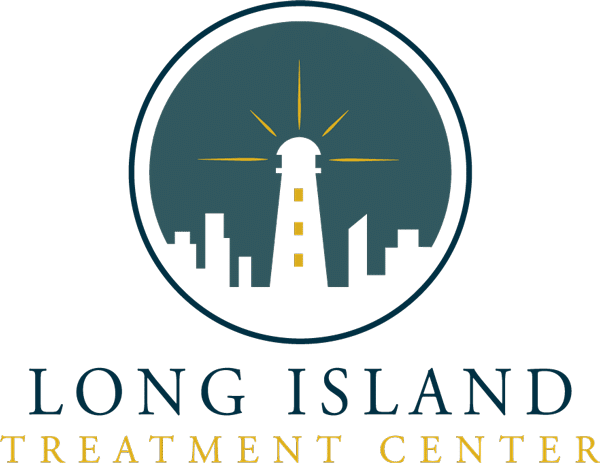Levels of Care for Addiction Treatment
Addiction treatment has come a long way over the years. Gone is the one-size-fits-all approach to treatment. Now, rehab centers focus more on creating individualized treatment plans that address the specific needs of clients.
Determining the level of care that fits each person’s needs is an integral part of these individualized plans. The specific level of care has to give people enough support while still providing the freedom they need to impact their lives positively.
In general, there are five levels; one of them is for individuals at risk of developing a drug addiction. These levels of care are:
- Level 0.5 — Early drug intervention.
- Level 1 — Outpatient drug rehab.
- Level 2 — Partial hospitalization or intensive outpatient rehab.
- Level 3 — Inpatient or residential treatment.
- Level 4 — Intensive inpatient or medically managed treatment.
Keep in mind that the name for each level might vary slightly between rehab facilities, but the goal remains the same. Also, it’s essential to know that some people receive a step-down approach to rehab, and in those cases, they’ll enter rehab under a higher level of care and eventually work down to a lower one.

Table of Contents
How Does a Rehab Center Determine Which Level of Care People Need?
The first step at rehab or addiction treatment centers involves the providers gathering information about the clients. Some of the questions that they might ask to determine the level of care people need include:
- How often do they use drugs, and how much?
- Are there any other underlying mental health problems?
- Have they ever been in an addiction treatment program before?
- Do they currently take any medications for other medical issues?
- Does drug abuse run in the family?
Only answering these questions truthfully can help rehab centers accurately determine the level of treatment necessary for recovery. Also, the services that rehab facilities offer vary from place to place. When choosing the right rehab center, choose a location that offers different levels of treatment. The location should provide dual-diagnosis treatment, too, because addiction is a disorder that doesn’t typically appear alone.
Level 0.5 — Early Intervention
This level of treatment is the most basic. Unlike the other levels, this one is considered a preventive measure, which is why it’s listed as Level 0.5. The goal of early intervention is to prevent people from abusing substances and developing an addiction.
Specific diagnostic criteria indicate whether individuals require early intervention. For example, if they misuse a substance or take significant risks to partake in a substance, they may benefit from early intervention. Individuals who have a family history of drug addiction can benefit from early intervention as well. The reason is that research has found a link between genetics and substance abuse.
Early intervention typically involves structure therapy or some informal counseling. While early intervention doesn’t take a significant commitment from clients, it still requires them to show up for counseling and to be open to the idea of getting ahead of a possible substance abuse problem.
Level 1 — Outpatient Rehab
Outpatient rehab is the first level of care for individuals who have already developed an addiction. Frequently, they enter outpatient rehab because it’s one of the more affordable addiction treatment options.
This type of treatment takes place in a non-residential setting. In short, they don’t have to live at the rehab center, and they return home to their families. The number of hours a week that outpatient rehab treatment requires depends on the rehab center and clients’ needs. Usually, it requires at least nine hours per week for adults.
Outpatient treatment is typically an excellent option for individuals with less severe substance abuse issues. It’s ideal for people who have already undergone higher levels of treatment and are on a step-down approach.
Level 2 — Intensive Outpatient Treatment
The level of treatment above outpatient rehab is intensive outpatient treatment. Much like traditional outpatient rehab, individuals don’t have to live at the rehab center while receiving care. The most significant difference between outpatient rehab and intensive outpatient treatment is the number of hours they spend at the rehab center for treatment.
For example, it’s not uncommon for intensive outpatient programs to require 20 or more hours of treatment per week, and it ensures that they spend a great deal of time at the rehab center undergoing treatment for their addiction. Usually, these hours are broken up into five- or six-hour sessions a day throughout the week.
This type of program is better for individuals who have more complex problems, such as co-occurring disorders, which are other disorders that occur alongside substance abuse. Like outpatient rehab, though, intensive outpatient treatment is often part of a step-down approach to treatment.
Level 3 — Residential Rehab
The fourth level of care gets into more comprehensive rehab programs. Level 3 is known as an inpatient or residential rehab. Unlike outpatient programs, people who receive this care level will live at the rehab facilities during treatment. This makes these programs perfect for individuals who need 24-hour care or supervision.
Residential rehab programs generally last anywhere between 30 to 90 days, depending on the clients’ needs. Once they complete residential rehab, they might enter a lower level of care to continue treatment while gaining more freedom.
Most of the time, individuals who enroll in residential care have to undergo detox before enrolling. By undergoing detox first, they’re less likely to need any medical stabilization. As a result, residential treatment is all about helping individuals learn to overcome addiction and manage triggers, and it has nothing to do with managing detox.
Inpatient treatment is perfect for individuals who haven’t mastered controlling or avoiding triggers that make them use substances. They get very little free time but learn healthy coping habits.
However, there are a few drawbacks to enrolling in a residential program. The biggest problem that people run into is the cost. Unlike an outpatient program, it requires them to live at the rehab center. Because of that, they aren’t just paying for treatment, and they’re also paying for room and board. On that same note, individuals can’t work while receiving inpatient care because they can’t leave the rehab centers.
Level 4 — Intensive Inpatient Rehab
Intensive inpatient or medically managed rehab is generally the highest level of care that individuals can get for substance use and addiction. Unlike the other levels of care, this addiction treatment is reserved for people who need medical stabilization. Thus, it stands out from traditional inpatient rehab because people can enter this program without detoxing first.
The “medically managed” part of the name comes from this level of treatment, typically using medication to stabilize withdrawal symptoms. The entire withdrawal process is monitored, and a medical team helps people stay as comfortable as possible.
During intensive inpatient rehab, clients are under full 24-hour medical care. They also receive medication and counseling. In most cases, they don’t end care with Level 4 treatment. Instead, this care level is seen more as a starting point. After completing it, they enter one of the lower treatment levels.

Long Island Treatment Center Has the Level of Care You Need
Do you or a loved one struggle with drug addiction? If so, it’s time to get the help you need. At Long Island Treatment Center, we offer all the levels of care that you need to overcome substance abuse.
Are you unsure which level of care you need? Don’t worry because we can determine the right level of care for you. Some of the programs that we provide include:
- Dual-diagnosis treatment.
- Intensive outpatient rehab.
- Outpatient rehab.
- Interventions.
- Aftercare programs.
Don’t struggle with addiction alone. Get the help that you need to manage addiction effectively. Reach out to Long Island Treatment Center today to learn more about our programs or set up a visit.

